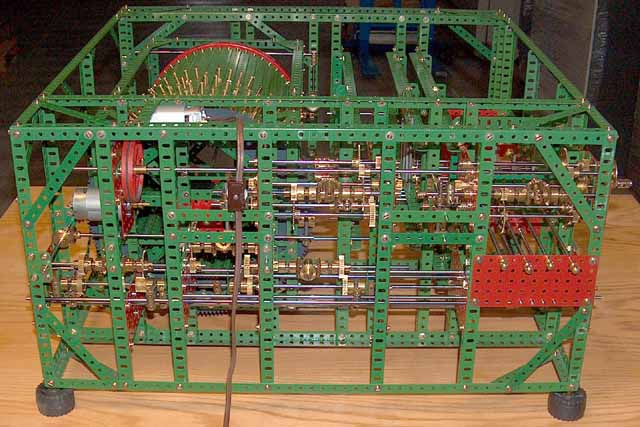Analytical Engine
After
work stopped on the difference engine around 1834, Babbage began to
think about generalizing the machine to handle a wider class of
calculations. After a very rapid period of development he had, by 1837,
a fairly complete set of plans for a machine he called the Analytical
Engine. This machine was vastly more complex than the Difference
Engine and incorporated many of the features of modern digital
computers.
Babbage continued work on refining and simplifying the Analytical Engine until about 1857, though he made no attempt to physically construct it. After a break of many years, he returned to it in later life, mostly working on manufacturing techniques that might have allowed a simplified version to be constructed. At his death only a small fragment was completed. His youngest son Henry picked up the work for a time, and in 1910 demonstrated a working portion of the mill and printing apparatus. Both these items are preserved in the Science Museum in London.
Babbage continued work on refining and simplifying the Analytical Engine until about 1857, though he made no attempt to physically construct it. After a break of many years, he returned to it in later life, mostly working on manufacturing techniques that might have allowed a simplified version to be constructed. At his death only a small fragment was completed. His youngest son Henry picked up the work for a time, and in 1910 demonstrated a working portion of the mill and printing apparatus. Both these items are preserved in the Science Museum in London.

This diagram, taken from Bromley (1982) illustrates the principle of the control barrel.

(Picture courtesy of Mike Williams)
LINKS:
Babbage's Analytical Engine
Last modified: 28 May 2007 If you experience any problems with this site, please contact the webmaster |
©
2005-2007 Tim Robinson |